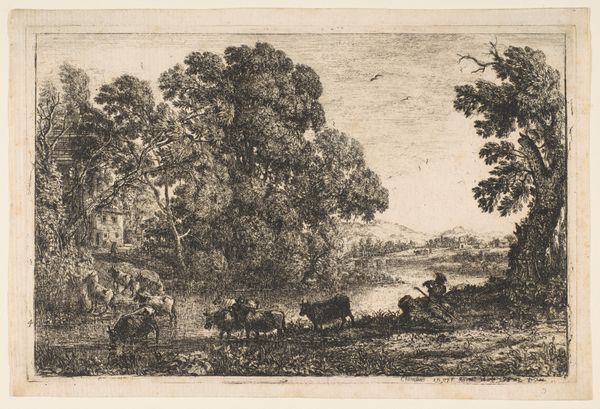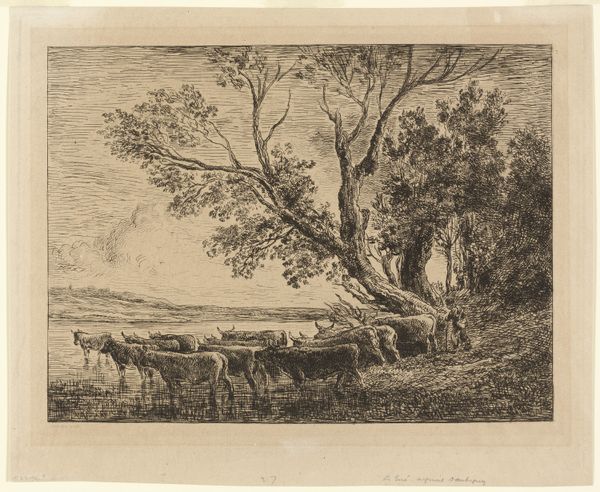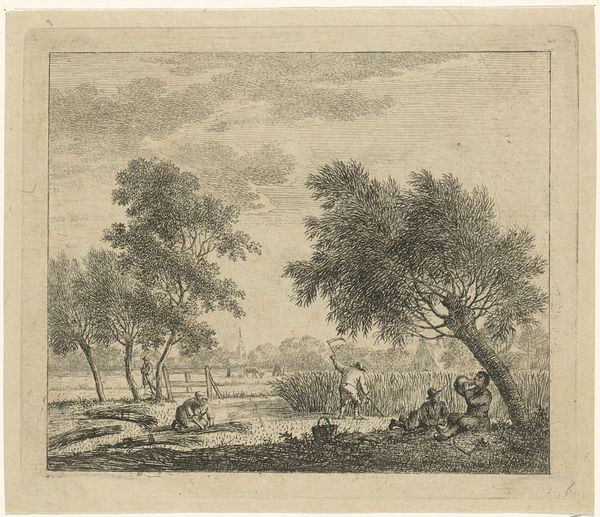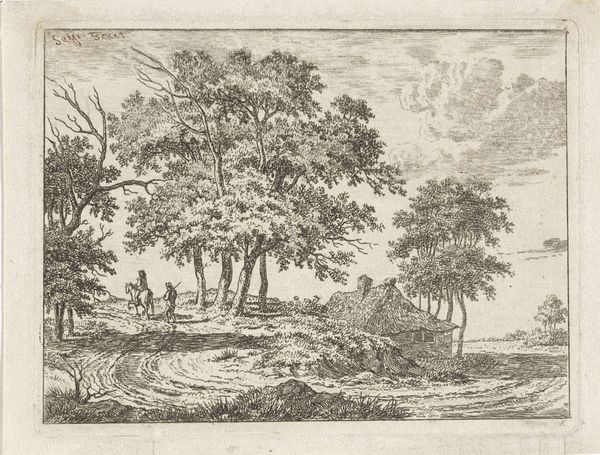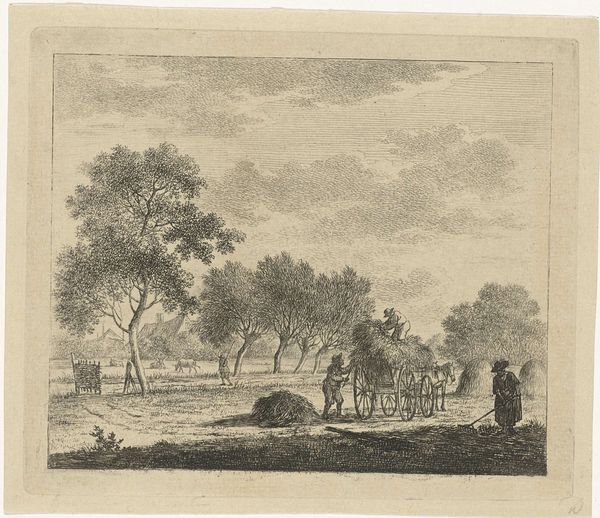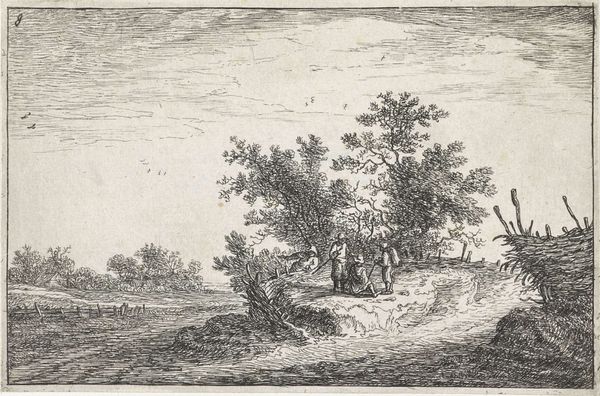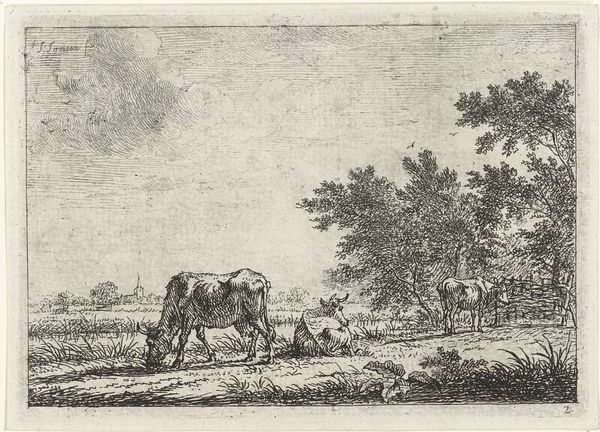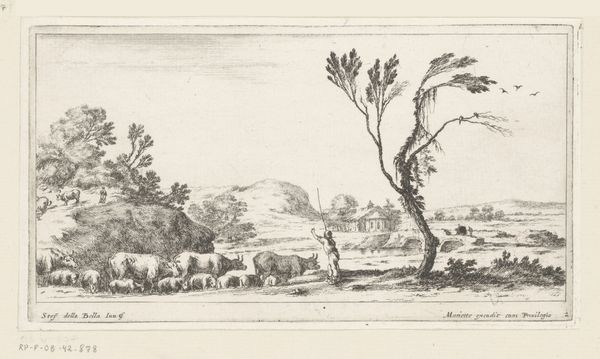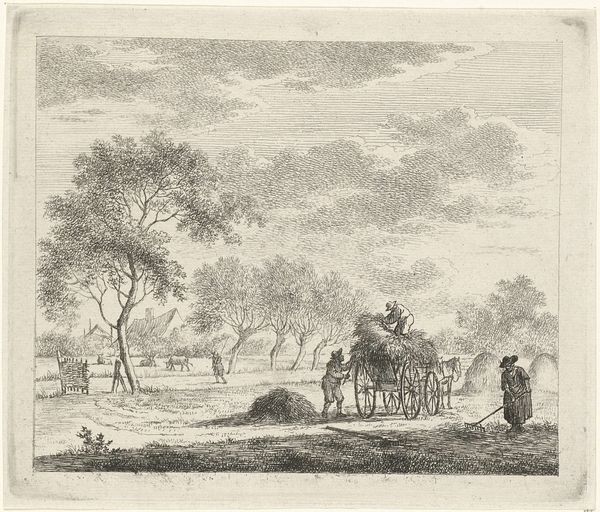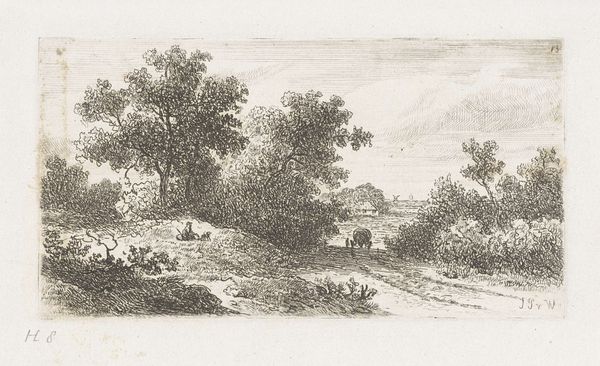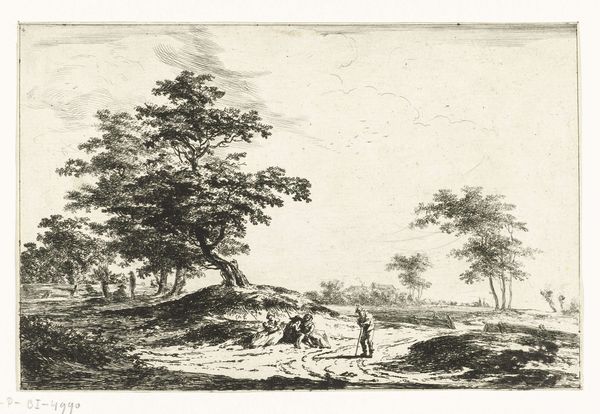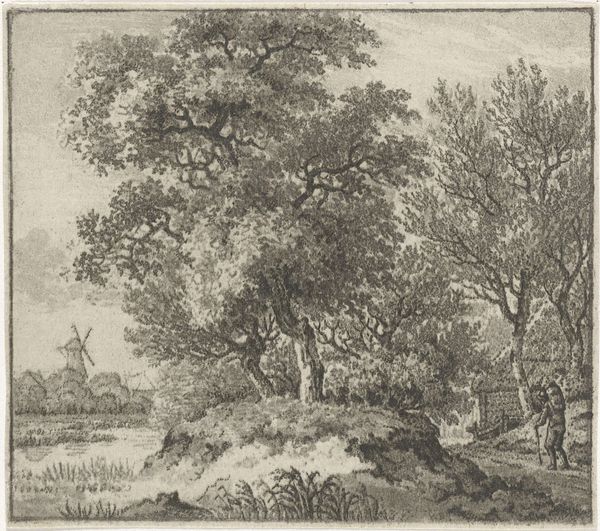
drawing, print, etching
#
drawing
# print
#
etching
#
landscape
#
etching
#
romanticism
#
realism
Dimensions: height 96 mm, width 126 mm
Copyright: Rijks Museum: Open Domain
Ernst Willem Jan Bagelaar created this print, "Landscape with two cows by a willow," in the late 18th or early 19th century. Bagelaar, living through the Batavian Republic and the Napoleonic Kingdom of Holland, navigated a world in transition. The image depicts a serene, rural scene. Yet, landscapes were rarely just landscapes during this period. They reflected ideas about nationhood, class, and the relationship between humanity and nature. The rise of landscape art coincided with the growth of national identity. Consider the cow, a symbol deeply entwined with Dutch identity and agricultural wealth. What does it mean to feature them so prominently? Are they simply part of the scenery, or do they represent something more profound about the Netherlands’ self-image? The tranquil scene invites reflection on the changing relationship between people and the land.
Comments
No comments
Be the first to comment and join the conversation on the ultimate creative platform.
